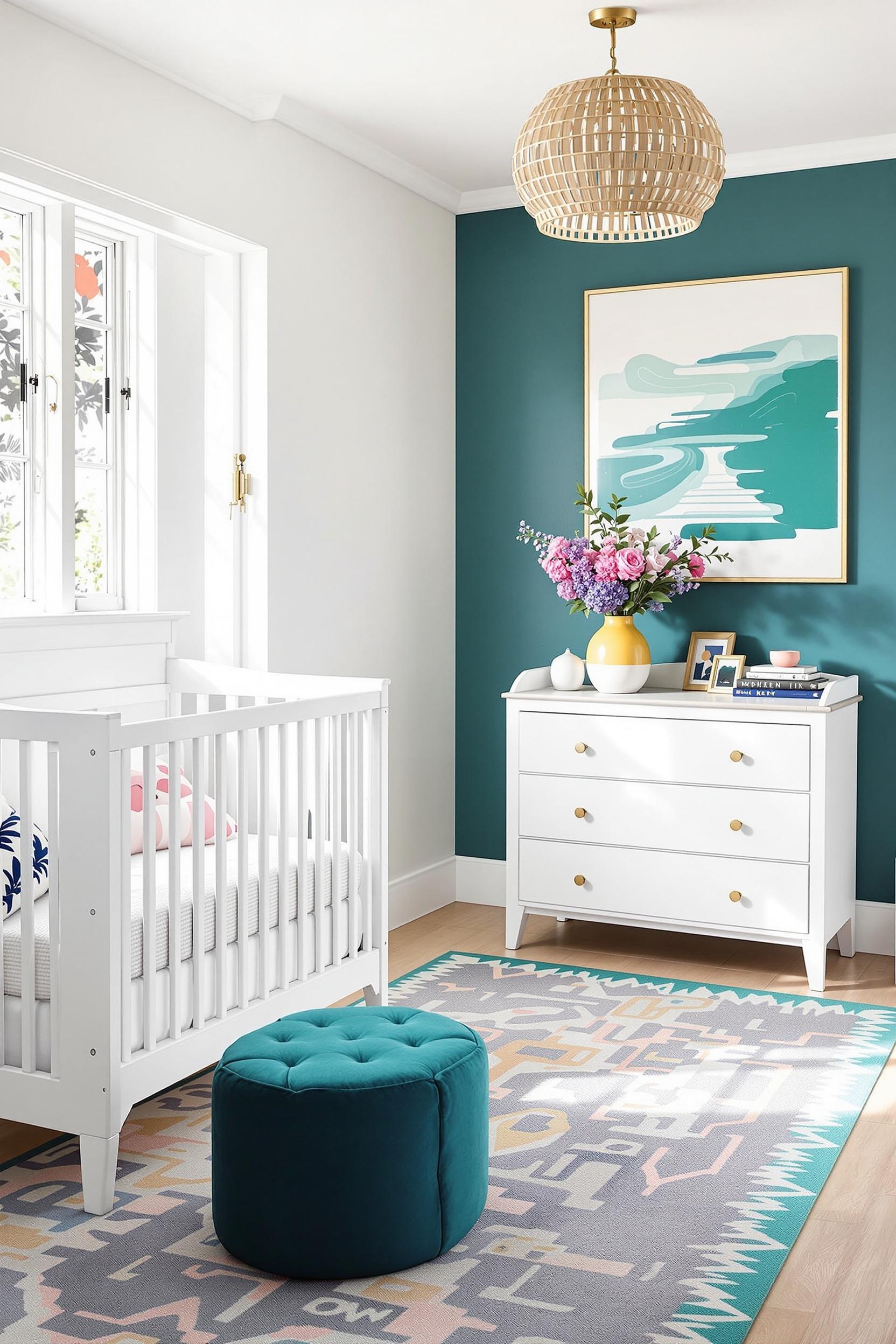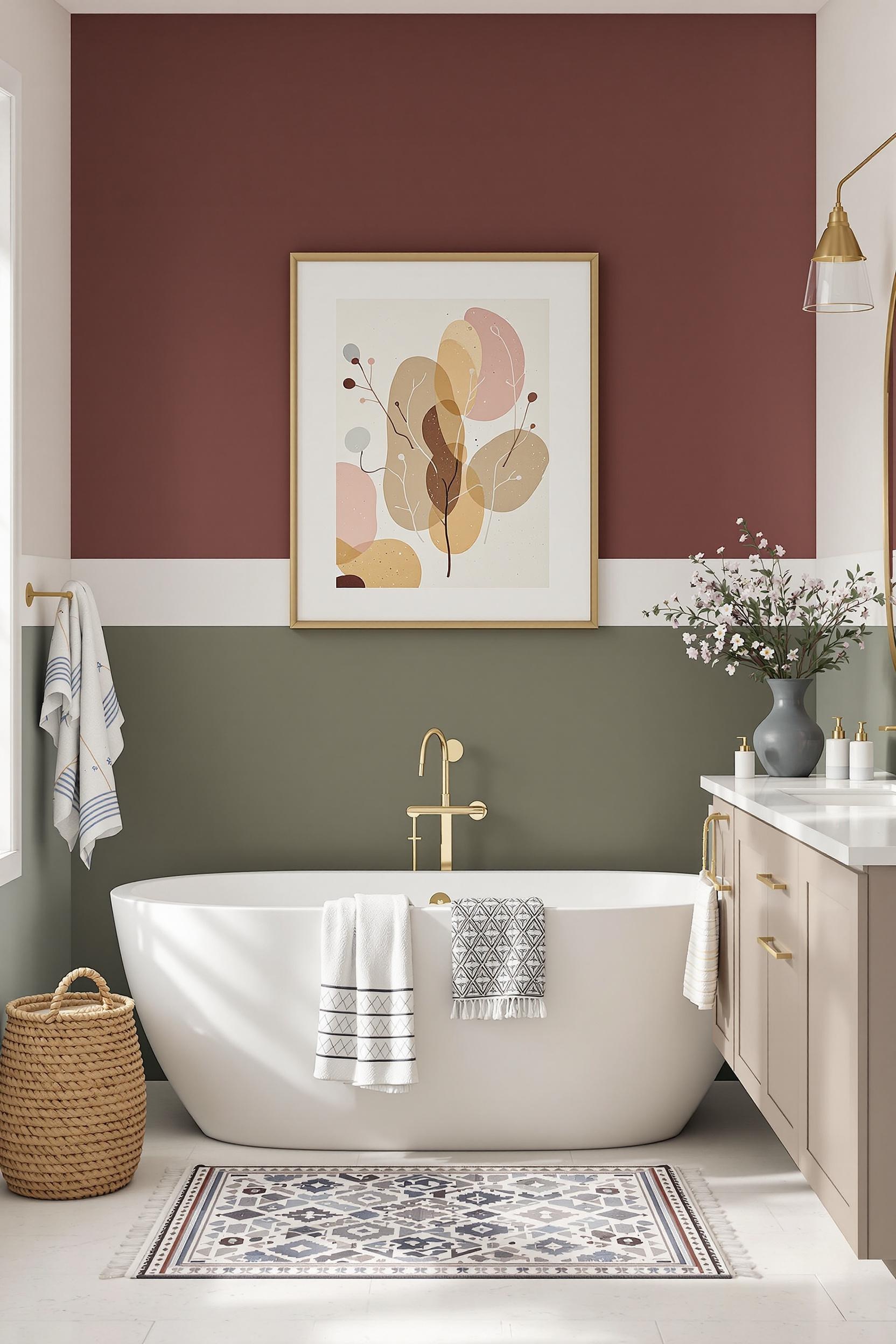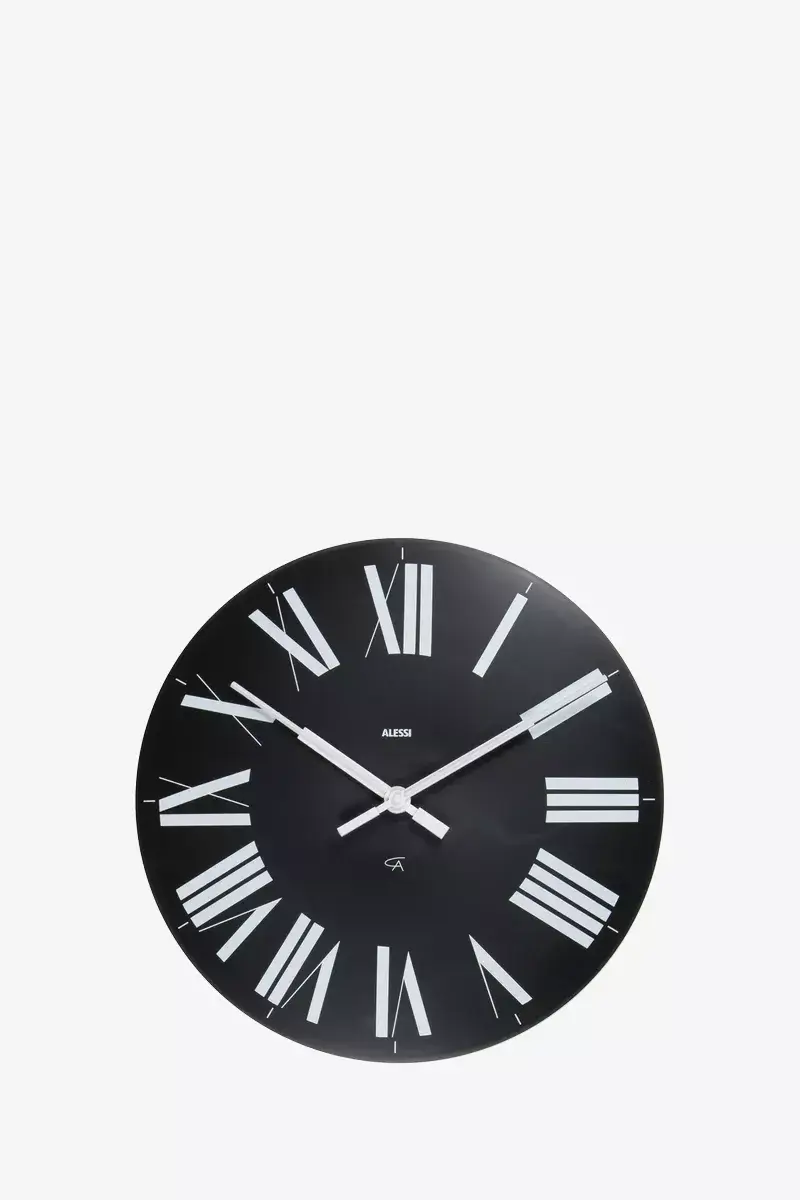
Color Blocking Nursery Ideas: Creating Defined, Functional Spaces With Style
Have you ever walked into a nursery and instantly felt both calm and inspired? That’s the power of great design — and one of my favorite methods for achieving it is color blocking in nurseries. This approach is more than just a trend; it’s a clever strategy to create defined spaces in child rooms while keeping everything stylish, functional, and incredibly inviting.
In my experience as an interior designer, I’ve used color blocking nursery ideas to transform spaces into minimal, yet cozy, environments. Combining nursery zone furniture arrangement, purposeful color schemes, and modern nursery furniture placement, I’ve helped families bring dream nurseries to life – even in small rooms.
With the right interior design for nurseries, you can create a calming retreat that supports your baby’s development — and your style. In this post, I’ll break down exactly how to do it.
Understanding the Power of Color Blocking Wall Designs in Nurseries
Color blocking wall designs are so much more than just painted shapes or bold lines. They serve a purpose. In nurseries, this technique can:
- Make small rooms feel larger
- Create natural divisions within one space
- Establish zones for sleep, play, changing, and reading
- Use visual cues to create calm or energy
I often start with an accent wall — typically behind the crib — using a color like sage green or soft pastel mint. This becomes a restful backdrop for the sleep zone, and immediately adds depth. Then, I extend the effect to other functional areas using either painted blocks or color panels paired with smart nursery zone furniture arrangement.
Minimalist Nursery Design: How Color Shapes Function
Color Psychology for Nursery Color Schemes
If you want your nursery to feel soothing yet stimulating, color psychology is your best friend. Minimalist nursery color block ideas offer a chance to play with subtle transitions. Soft greens and blues reduce stress and help babies sleep better. Meanwhile, gentle yellows can encourage imagination in the play area.
Stick with neutral bases — warm white or soft gray — and pair them with 1–2 bold accents. This keeps the space clean and modern while allowing each functional area a sense of individuality. My go-to nursery color schemes typically include:
- Sage green + cream + natural wood
- Blush pink + gray + white
- Soft mint + beige + pastel yellow
Using Furniture to Enhance Zones
Purposeful modern nursery furniture placement helps you get the most from your space. For instance, placing a crib against your color-blocked wall defines the sleep zone. Add a glider next to it, and you have a complete bedtime nook. Across the room, using a compact dresser and wall-mounted storage creates a smart changing area.
I recommend vertical furniture lines to draw the eye upward. Think tall bookshelves, wall racks, or slim storage towers. This lets you save precious floor space while keeping the room open and uncluttered — a key goal in minimalist nursery design.
Color Blocking Nursery Ideas for Small Spaces
Working with limited square footage? Don’t worry — color blocking wall designs actually make small nurseries more functional and visually spacious. Instead of using large pieces or dividers, rely on vertical paint transitions and intentionally placed rugs or color-coordinated corners.
Here are a few winning hacks I’ve used in tight rooms:
- Two-tone walls with calming lower color and brightening upper section
- Compact multi-use furniture like cribs with drawers or fold-down changing tables
- Wall-mounted baskets, hooks, and shelves for storage
- Mats, rugs, or seating that match color zones to define sections
Pro Tips for Minimalist Color Block Ideas
- Choose light, neutral base paint to keep the room bright
- Stick with 2–3 accent colors
- Keep clutter to a minimum
- Let natural light enhance your color areas
How to Create Purposeful Nursery Zones with Style
Defined spaces in child rooms support daily activities and help your baby understand their environment. Breaking your nursery into zones helps everyone — baby, parents, and caregivers — work more efficiently in the room.
I typically recommend creating at least four main functional zones:
- Sleep Zone: A calming area, ideally color blocked with soft pastels or light neutrals
- Changing Station: Neutral palette with wipeable surfaces and closed storage
- Play Area: Gentle patterns or creative accent colors to encourage curiosity
- Reading Nook: Cozy seating, warm tones, and good lighting
Remember, use furniture to divide spaces naturally. Avoid heavy visual blocks. Instead, let color transition smoothly between zones to maintain flow and flexibility.
Modern Nursery Layout Tips for Long-Term Success
Your nursery will evolve over time. Versatility is key. Choose designs that can grow with your child. Minimalist nursery design makes this simple, thanks to its clean lines and adaptable zones.
When selecting modern nursery furniture placement, prioritize flexibility. Storage units with removable bins, gliders that double as reading chairs, and wall-mounted organizers all allow your layout to shift over the years.
Essential Color Blocking Elements
- Neutral base + 2–3 accent colors
- Multi-functional furniture
- Flexible storage options
- Good lighting (natural and task lighting)
- Wall art or decals that match your zoning palette
These core elements simplify the process while keeping your nursery polished and organized.
Frequently Asked Questions About Color Blocking Nursery Design
What is color blocking in a nursery?
Color blocking uses color to separate different parts of the room visually. It helps define each function — sleep, change, play — through design.
How do I make a small nursery feel larger?
Choose light colors. Use vertical color zones that pull the eye upward. Stick with minimal furniture and smart storage solutions.
What are the best nursery color schemes for a minimalist feel?
Try soft gray with white, sage green with cream, or blush pink with warm wood tones.
Can I color block in a gender-neutral nursery?
Absolutely. Use soft, muted tones like soft green, dove gray, or warm beige combined with simple geometric color blocks.
What if I’m on a budget?
Paint is affordable and transformative. Use decals or temporary wallpapers. Repurpose furniture with cohesive color accents.
Transform Your Nursery: Color Blocking Magic Awaits!
Color blocking in nurseries brings beauty and intention to every corner. Whether you have a full room or a small corner to work with, these modern nursery layout tips and minimalist color block ideas.






